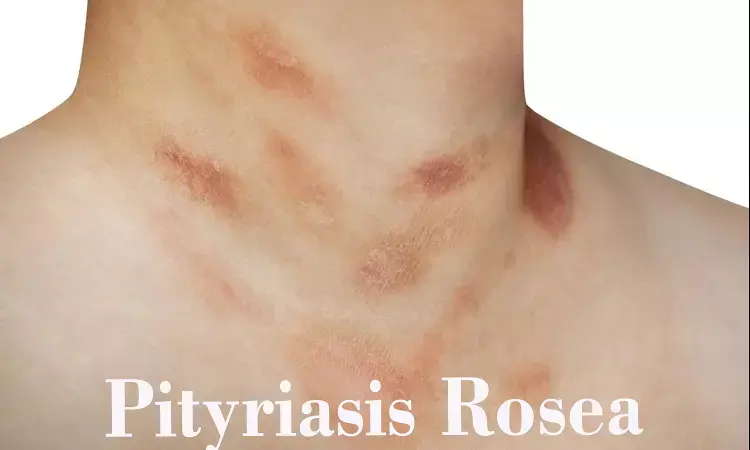- Home
- Medical news & Guidelines
- Anesthesiology
- Cardiology and CTVS
- Critical Care
- Dentistry
- Dermatology
- Diabetes and Endocrinology
- ENT
- Gastroenterology
- Medicine
- Nephrology
- Neurology
- Obstretics-Gynaecology
- Oncology
- Ophthalmology
- Orthopaedics
- Pediatrics-Neonatology
- Psychiatry
- Pulmonology
- Radiology
- Surgery
- Urology
- Laboratory Medicine
- Diet
- Nursing
- Paramedical
- Physiotherapy
- Health news
- Fact Check
- Bone Health Fact Check
- Brain Health Fact Check
- Cancer Related Fact Check
- Child Care Fact Check
- Dental and oral health fact check
- Diabetes and metabolic health fact check
- Diet and Nutrition Fact Check
- Eye and ENT Care Fact Check
- Fitness fact check
- Gut health fact check
- Heart health fact check
- Kidney health fact check
- Medical education fact check
- Men's health fact check
- Respiratory fact check
- Skin and hair care fact check
- Vaccine and Immunization fact check
- Women's health fact check
- AYUSH
- State News
- Andaman and Nicobar Islands
- Andhra Pradesh
- Arunachal Pradesh
- Assam
- Bihar
- Chandigarh
- Chattisgarh
- Dadra and Nagar Haveli
- Daman and Diu
- Delhi
- Goa
- Gujarat
- Haryana
- Himachal Pradesh
- Jammu & Kashmir
- Jharkhand
- Karnataka
- Kerala
- Ladakh
- Lakshadweep
- Madhya Pradesh
- Maharashtra
- Manipur
- Meghalaya
- Mizoram
- Nagaland
- Odisha
- Puducherry
- Punjab
- Rajasthan
- Sikkim
- Tamil Nadu
- Telangana
- Tripura
- Uttar Pradesh
- Uttrakhand
- West Bengal
- Medical Education
- Industry
Pityriasis rosea does not affect pregnancy outcomes: Study

Austria: A new study conducted by Lena Wenger-Oehn and the team indicates that pityriasis rosea (PR) had no effect on pregnancy or birth outcome in the majority of instances (74%, 73/99). The findings of this study were published in the Journal of the German Society of Dermatology.
PR is a self-limiting rash that typically affects young adults between the ages of 15 and 35. Pityriasis rosea occurs once in a lifetime but can reoccur, is contagious, and is linked to other variables such as socioeconomic status. There is compelling evidence of an infectious origin, particularly for human herpesviruses (HHV) 6 and 7. As a result, this study was carried out to investigate the association between pityriasis rosea and pregnancy outcomes.
To investigate the incidence and risk factors for a poor pregnancy outcome following PR infection, data from 46 pregnant women with PR seen in the dermatological university clinic between 2003 and 2018 were reviewed and compared with patient data (n = 53) from previously published research.
The key findings of this study were as follows:
1. Adverse pregnancy outcomes (defined as miscarriage, early birth before week 37 of gestation, or birth weight 2,500 g) were considerably lower in our research group than in a pooled cohort derived from previously published studies.
2. The week of pregnancy at the commencement of PR was inversely related to an adverse result, according to an analysis of pooled data from our study and earlier investigations.
3. Furthermore, the length of PR, additional extracutaneous symptoms, and extensive rash distribution were all linked to an adverse outcome.
In conclusion, previous studies found a total abortion rate of 13% in pregnant women with PR, which is comparable to the general population or even lower, as indicated by data analysis from our study. However, if PR begins early in pregnancy, lasts for a long time, spreads extensively, and is accompanied by extracutaneous symptoms, the likelihood of a negative result increases. As a result, regular gynecological monitoring of pregnant women with PR is advised.
Reference:
Wenger-Oehn, L., Graier, T., Ambros- Rudolph, C., Müllegger, R., Bittighofer, C., Wolf, P. and Hofer, A. (2022), Pityriasis rosea in pregnancy: A case series and literature review. JDDG: Journal der Deutschen Dermatologischen Gesellschaft. https://doi.org/10.1111/ddg.14763
Medical Dialogues consists of a team of passionate medical/scientific writers, led by doctors and healthcare researchers. Our team efforts to bring you updated and timely news about the important happenings of the medical and healthcare sector. Our editorial team can be reached at editorial@medicaldialogues.in.
Dr Kamal Kant Kohli-MBBS, DTCD- a chest specialist with more than 30 years of practice and a flair for writing clinical articles, Dr Kamal Kant Kohli joined Medical Dialogues as a Chief Editor of Medical News. Besides writing articles, as an editor, he proofreads and verifies all the medical content published on Medical Dialogues including those coming from journals, studies,medical conferences,guidelines etc. Email: drkohli@medicaldialogues.in. Contact no. 011-43720751


